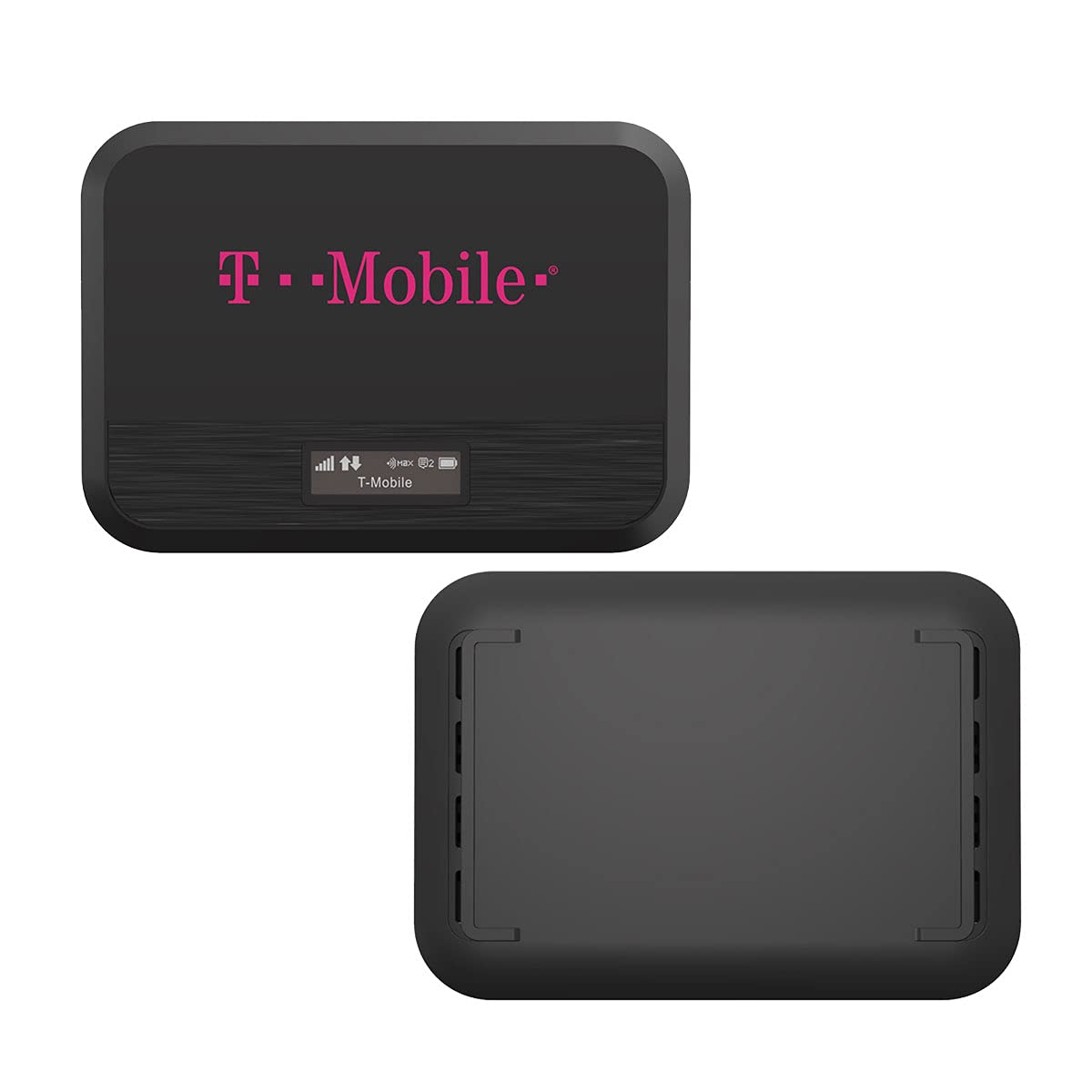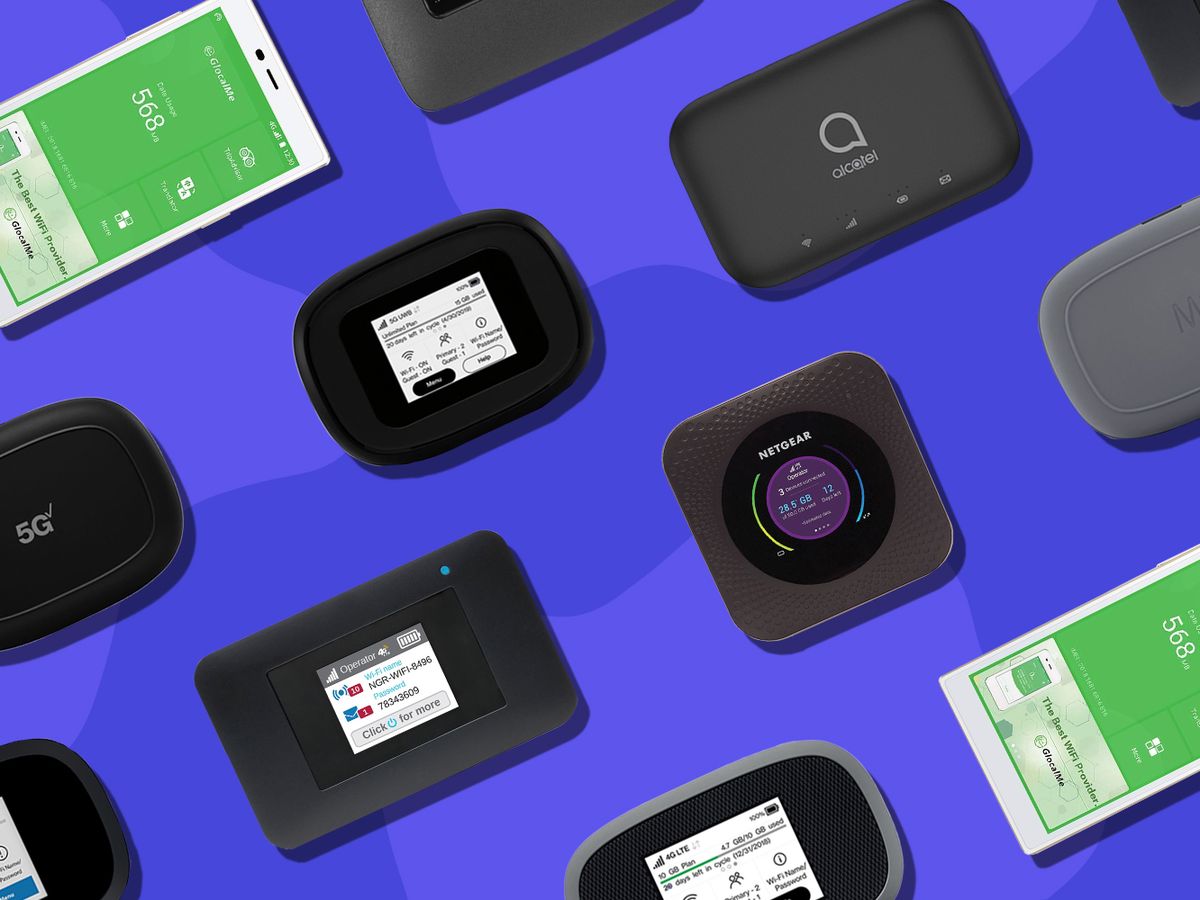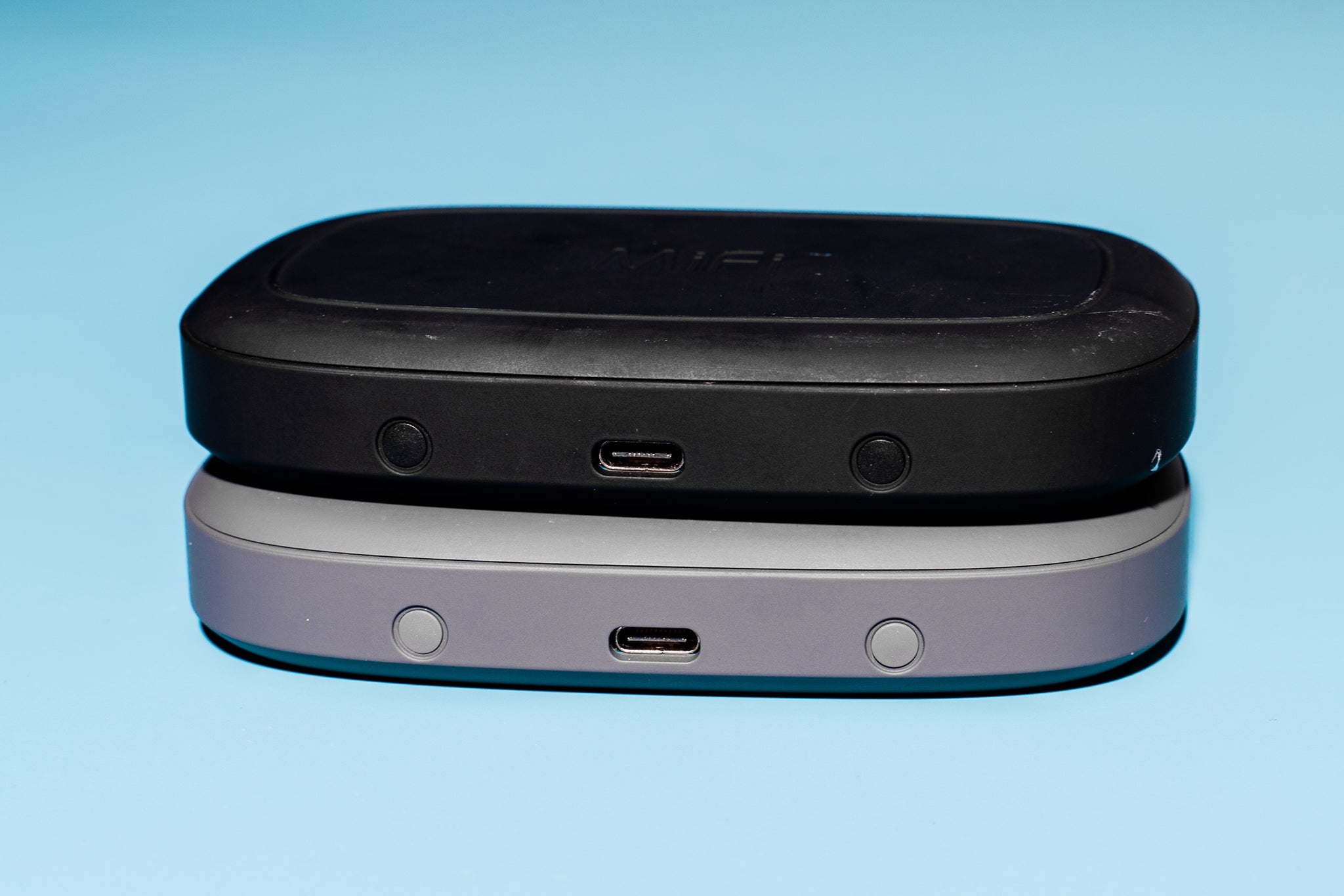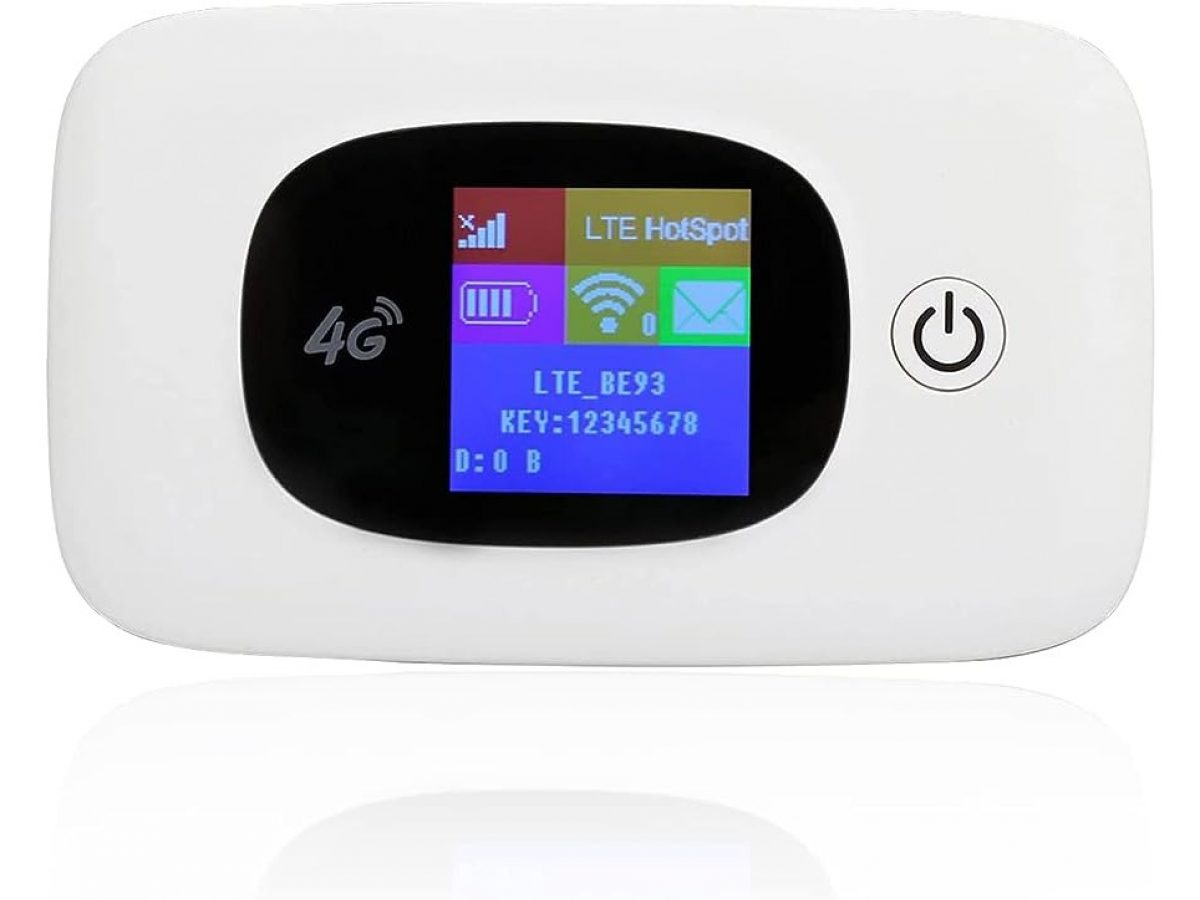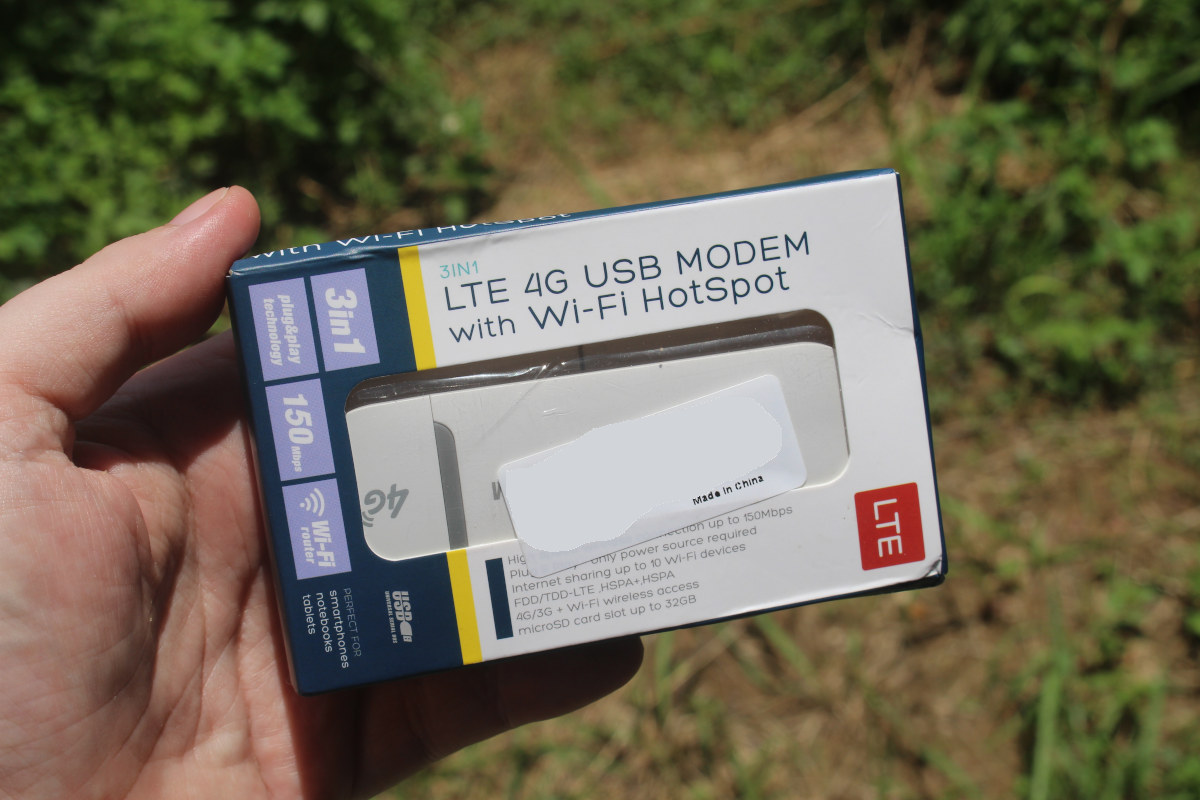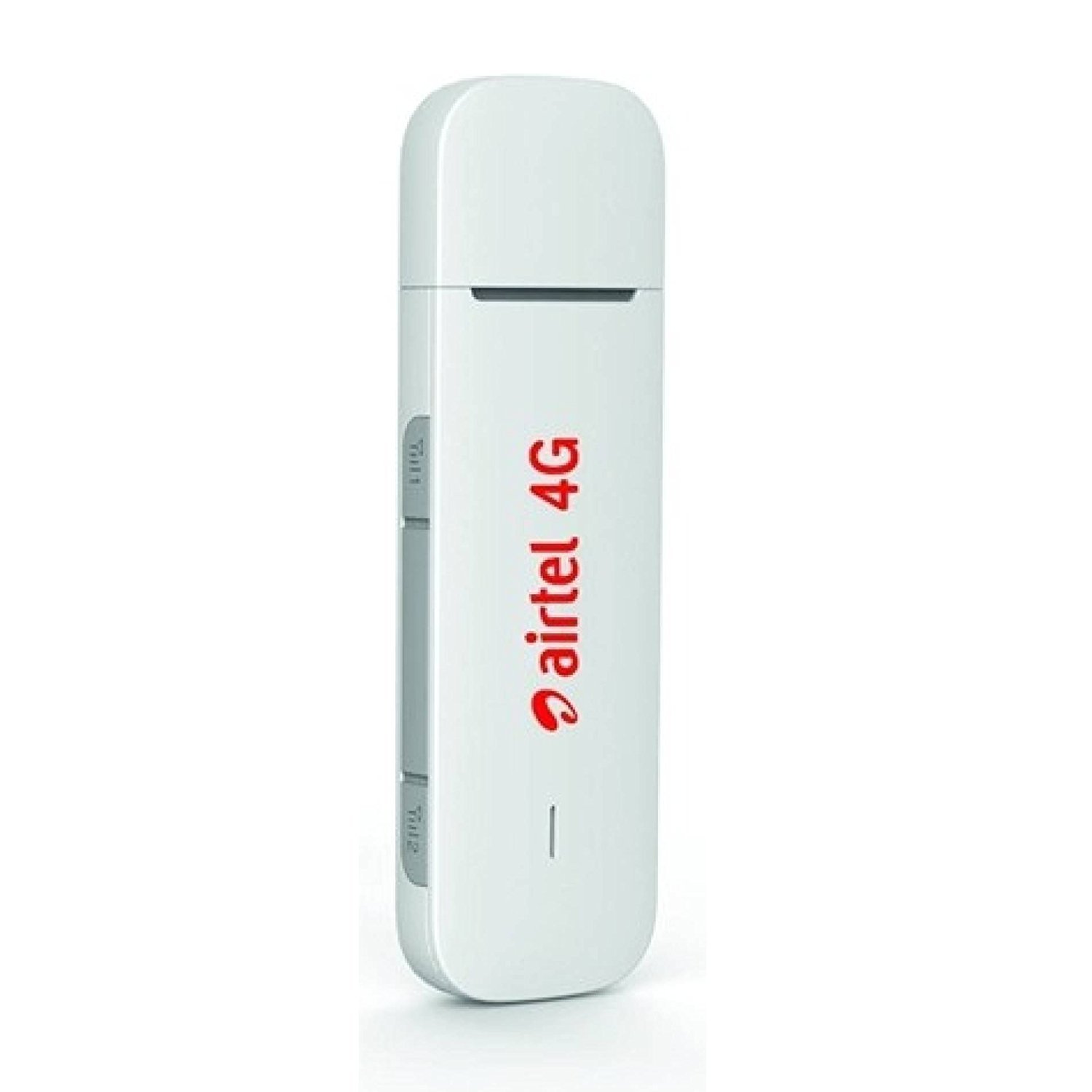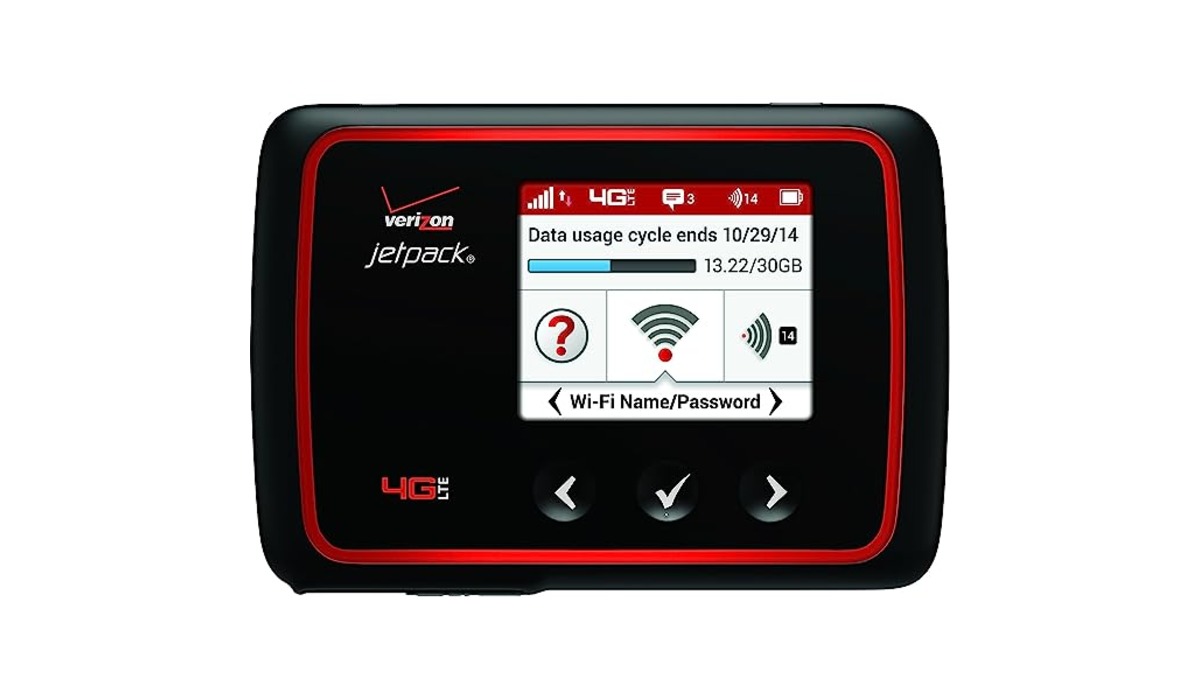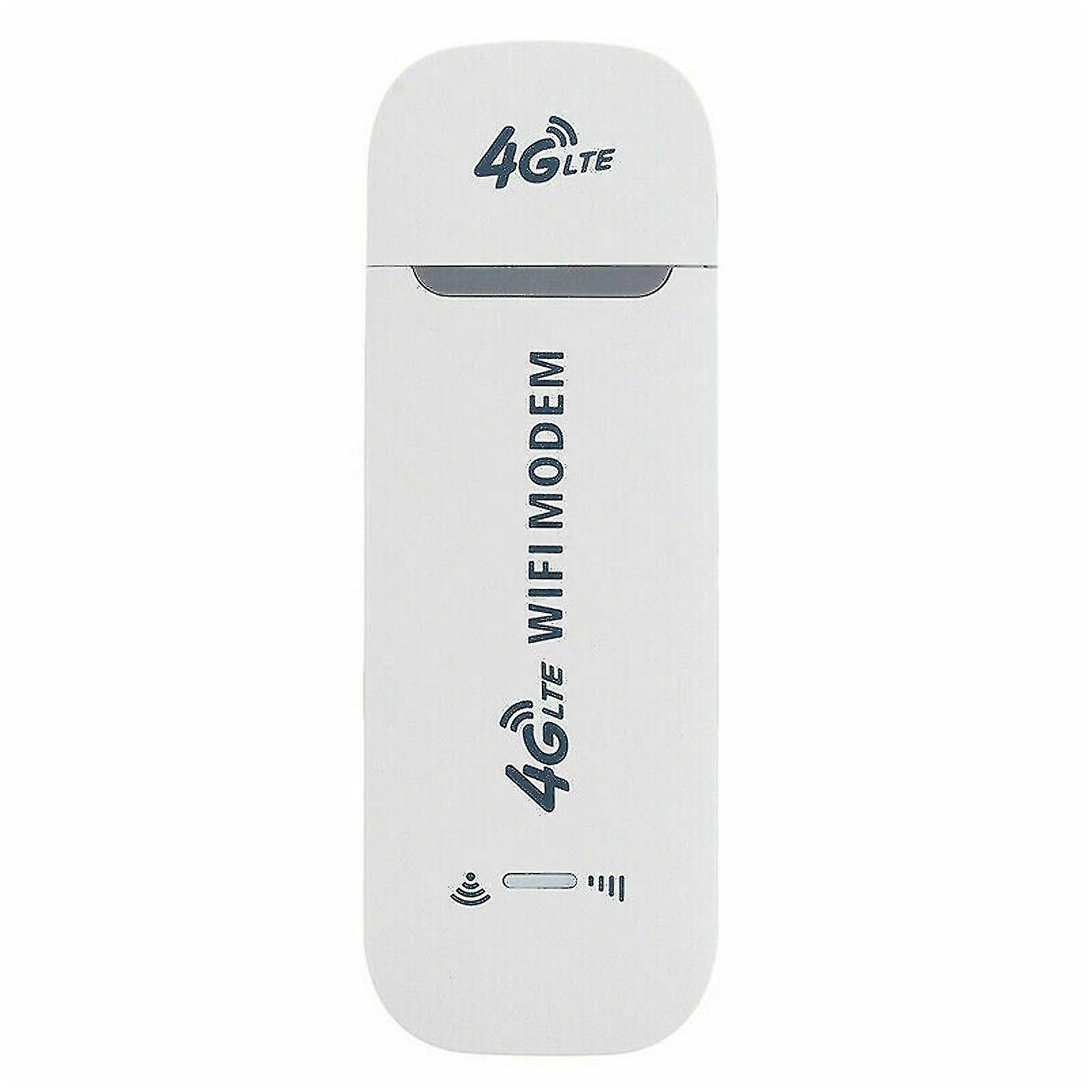What is a 4G Hotspot?
A 4G hotspot is a small portable device that allows you to connect multiple devices to the internet using a 4G cellular network. It acts as a wireless router, creating a Wi-Fi network that you can connect your smartphones, tablets, laptops, and other Wi-Fi-enabled devices to. This enables you to access the internet on the go, without relying on fixed broadband connections or Wi-Fi hotspots.
The primary function of a 4G hotspot is to provide internet connectivity in areas where traditional internet services may be unavailable, impractical, or too slow. It’s a convenient solution for travelers, remote workers, and individuals living in rural or underserved areas. With a 4G hotspot, you can stay connected and productive wherever you are.
4G, short for fourth-generation, refers to the latest cellular network technology that offers high-speed data transfer. It provides faster and more reliable internet access compared to previous generations like 3G. A 4G hotspot harnesses this technology to provide seamless internet connectivity to multiple devices simultaneously.
These portable devices come in various forms, including small pocket-sized units, USB dongles, or even integrated into smartphones and tablets. They are usually easy to set up and require a data plan from a cellular service provider.
4G hotspots are not limited to personal use; they are also extensively used by businesses to establish temporary or backup internet connections for events, remote worksites, or in case of network outages. They offer flexibility and convenience, making them a popular choice for individuals and organizations alike.
Overall, a 4G hotspot is a versatile device that enables you to access the internet on the go, providing a reliable and convenient solution for staying connected and productive in various situations.
How does a 4G Hotspot work?
A 4G hotspot utilizes cellular network technology to provide internet connectivity to multiple devices. Here’s a simplified breakdown of how it works:
1. Mobile Broadband Connection: A 4G hotspot is equipped with a SIM card, similar to a smartphone, that connects to a mobile network provider’s data network. The SIM card allows the device to establish a connection and access the internet using the cellular network infrastructure.
2. Signal Reception: The 4G hotspot constantly scans for available mobile network signals in the area. It detects nearby 4G networks and communicates with the network towers to establish a stable connection. The strength and quality of the signal determine the speed and reliability of the internet connection.
3. Wi-Fi Network Creation: Once connected to the mobile network, the 4G hotspot creates a local Wi-Fi network that can be accessed by multiple devices within its signal range. The hotspot acts as a wireless router, generating a Wi-Fi network with its own unique name (SSID) and password.
4. Device Connection: Users can connect their smartphones, tablets, laptops, or any Wi-Fi-enabled devices to the 4G hotspot’s Wi-Fi network. By entering the provided password, their devices can establish a connection and access the internet through the cellular network connection of the hotspot.
5. Data Transfer: When a device is connected to the 4G hotspot’s Wi-Fi network, it can transmit and receive data to and from the internet via the cellular network. The data transfer speed will depend on factors such as the strength of the 4G signal, the capabilities of the hotspot device, and the number of connected devices sharing the internet connection.
6. Data Plan and Costs: To use a 4G hotspot, you will need a data plan from a mobile network service provider. The cost and terms of the data plan will vary based on the provider and the specific plan you choose. Typically, data plans offer a certain amount of data allowance per month or on a pay-as-you-go basis.
By utilizing the cellular network infrastructure and creating a local Wi-Fi network, a 4G hotspot enables multiple devices to access the internet conveniently and wirelessly, making it a versatile solution for individuals and businesses in need of mobile internet connectivity.
Factors that affect the speed of a 4G Hotspot
While a 4G hotspot is designed to provide high-speed internet connectivity, several factors can influence its actual speed. Understanding these factors can help you optimize your usage and improve the overall performance of your 4G hotspot. Here are some key factors that affect the speed of a 4G hotspot:
1. Network Coverage: The availability and quality of the 4G network in your area directly impact the speed of your 4G hotspot. If you are in an area with strong and stable 4G coverage, you are likely to experience faster internet speeds. However, if the network coverage is weak or inconsistent, it can result in slower speeds and potential connection drops.
2. Signal Strength: The signal strength between your 4G hotspot and the nearest network tower also affects the speed. A stronger signal will provide a faster and more reliable internet connection, while a weaker signal may result in slower speeds and reduced performance.
3. Network Congestion: The number of users connected to the same cell tower in your area can impact the speed of your 4G hotspot. During peak usage times when many people are accessing the network simultaneously, network congestion can occur. This increased demand can lead to slower speeds and reduced bandwidth available for each user.
4. Data Plan Limitations: The data plan you have subscribed to for your 4G hotspot may have limitations such as a data cap or throttling after reaching a certain usage threshold. Once you exceed these limits, your internet speeds may be reduced. It is essential to be aware of your data plan details and manage your usage accordingly to avoid speed limitations.
5. Hardware Performance: The performance capabilities of your 4G hotspot device can influence the speed it can achieve. Older or lower-end devices may not be able to support the maximum speeds provided by the 4G network. Upgrading to a newer or more advanced hotspot device can potentially improve the speed and overall performance of your internet connection.
6. Device Proximity: The distance between your connected devices and the 4G hotspot can impact the speed. Ideally, you should be within the recommended range of the hotspot to ensure optimal performance. The signal strength can weaken as devices move further away, resulting in slower speeds and potential connection issues.
By considering these factors and taking appropriate measures, such as selecting a reliable network provider, optimizing device placement, and monitoring your data usage, you can minimize the impact of these factors and maximize the speed and performance of your 4G hotspot.
Real-world speeds of a 4G Hotspot
The actual internet speeds you can expect from a 4G hotspot may vary depending on several factors, including network coverage, signal strength, network congestion, and the capabilities of your device. While 4G technology is known for offering high-speed data transfer, it’s important to understand the realistic speeds you can achieve in real-world usage scenarios.
In optimal conditions, with strong network coverage and minimal network congestion, 4G hotspots can deliver download speeds ranging from 5 Mbps to 100 Mbps or even higher. This allows for smooth web browsing, video streaming, online gaming, and file downloads. Upload speeds, on the other hand, can range from 1 Mbps to 50 Mbps, depending on the network and device capabilities.
However, it’s crucial to note that actual speeds can deviate from these ideal figures due to various factors. Network coverage plays a significant role in determining the speed. If you are in an area with weak or limited 4G coverage, your speeds may be significantly lower, and you may experience intermittent connectivity issues.
Network congestion is another factor that can impact real-world speeds. During peak hours, when many users are accessing the network simultaneously, the increased demand can result in slower speeds. This is especially true in densely populated areas or at crowded events where multiple users are sharing the same network resources.
The performance of your 4G hotspot device can also affect the speeds you experience. Older or lower-end devices may not support the full capabilities of the 4G network, resulting in slower speeds compared to more advanced models. Additionally, the number of connected devices sharing the hotspot’s internet connection can also impact speeds, as more devices place a greater demand on the available bandwidth.
In summary, while 4G hotspots have the potential to deliver high-speed internet connectivity, the actual speeds you experience depend on various factors. It’s essential to manage your expectations and consider the network coverage in your area, the congestion levels, the capabilities of your device, and the number of devices connected. By understanding these factors and optimizing your usage, you can make the most out of your 4G hotspot and enjoy reliable internet speeds for your on-the-go connectivity needs.
4G Hotspot speed vs. other internet options
A 4G hotspot provides a convenient and portable internet connection, but how does its speed compare to other internet options? Let’s explore how 4G hotspot speed stacks up against some common alternatives:
1. Traditional Fixed Broadband: Fixed broadband, such as DSL, cable, or fiber-optic connections, provides high-speed and stable internet access. These connections typically offer faster speeds compared to 4G hotspots. While 4G networks have made significant advancements in speed, fixed broadband connections still tend to provide faster and more consistent speeds for tasks that require large amounts of data transfer, such as heavy streaming, online gaming, or downloading large files.
2. Wi-Fi Hotspots: Wi-Fi hotspots are public or private access points that provide internet connectivity. While Wi-Fi hotspots rely on fixed broadband or wired connections, they can offer similar speeds to 4G hotspots in areas with strong and stable Wi-Fi signals. However, the availability and reliability of Wi-Fi hotspots can vary depending on location, making them less portable and consistent than a dedicated 4G hotspot.
3. Satellite Internet: Satellite internet is a viable option for those in remote or rural areas without access to traditional fixed broadband connections. While satellite internet can provide faster speeds than 4G hotspots in some cases, it often suffers from higher latency due to the distance signals must travel between the satellite and the user. This higher latency can affect real-time online activities, such as video calls or online gaming, making 4G hotspots a better choice for those requiring low-latency connections.
4. Tethering to a smartphone: Many smartphones can function as a mobile hotspot, allowing you to share your cellular data connection with other devices. While this can provide internet access in a pinch, the speed of tethering to a smartphone is typically slower than using a dedicated 4G hotspot. Tethering can quickly drain your phone’s battery, and depending on your data plan, it may also have limitations, such as reduced speeds after reaching a specific data threshold.
While 4G hotspot speeds may not match the speeds offered by traditional fixed broadband connections, they provide portability and flexibility, making them an excellent choice for individuals on the go. 4G hotspots can deliver reliable and consistent speeds for tasks such as web browsing, email, light streaming, and remote work. They offer a convenient solution for travelers, remote workers, and those in areas with limited or no access to fixed broadband connections.
Ultimately, the choice between a 4G hotspot and other internet options depends on your specific needs, location, and usage requirements. Consider factors such as speed, coverage, reliability, and portability to determine the best option for your internet connectivity needs.
Tips to maximize the speed of your 4G Hotspot
When using a 4G hotspot, there are several tips you can follow to optimize and maximize its speed. By implementing these tips, you can ensure a faster and more reliable internet connection. Here are some helpful tips:
1. Position your hotspot properly: Place your 4G hotspot in an elevated position, such as near a window, to improve signal reception. Avoid placing it near objects that may interfere with the signal, like thick walls or metal surfaces, as they can weaken the signal strength and reduce speed.
2. Check network coverage: Ensure that you are in an area with good network coverage. If the signal strength is weak, consider relocating to an area with stronger coverage or using a network booster or external antenna to improve signal reception.
3. Manage connected devices: Limit the number of devices connected to your hotspot at any given time. The more devices that are sharing the connection, the greater the impact on speed. Disconnect unused devices to free up bandwidth and improve overall performance.
4. Monitor data usage: Keep track of your data usage to avoid surpassing your data plan’s limits. If you exceed your data cap, your internet speeds may be throttled. Conserve data by disabling automatic updates, using Wi-Fi for large downloads, and streaming content in lower quality if necessary.
5. Keep your hotspot firmware up to date: Manufacturers often release firmware updates for their hotspot devices. Check for updates regularly and make sure your device is running the latest firmware version. These updates can optimize performance and address any bugs or connectivity issues.
6. Use Wi-Fi optimization techniques: Adjust your hotspot’s settings to optimize Wi-Fi performance. Enable WPA2 encryption for security, and experiment with different Wi-Fi channels to avoid interference from neighboring networks. Changing the channel to a less crowded one can improve speed and reduce signal interference.
7. Regularly recharge your hotspot: To ensure optimal performance, keep your 4G hotspot fully charged. A low battery can impact signal strength and reduce speed. Carry a power bank or charger to keep your hotspot powered throughout the day if needed.
8. Clear cache and cookies: Regularly clear the cache and cookies on your connected devices. This can help improve browsing speed and overall performance by removing any accumulated temporary data that may slow down your internet connection over time.
By implementing these tips, you can optimize the speed and performance of your 4G hotspot, ensuring a fast and reliable internet connection wherever you go. Take advantage of these suggestions to make the most out of your 4G hotspot’s capabilities.
Conclusion
A 4G hotspot offers the convenience of portable internet connectivity, allowing you to stay connected on-the-go. While the speed of a 4G hotspot may not match that of traditional fixed broadband connections, it provides a reliable option for individuals and businesses in various situations.
In this article, we explored what a 4G hotspot is and how it works. We discussed the factors that can affect its speed, including network coverage, signal strength, network congestion, and hardware performance. Real-world speeds of a 4G hotspot were also examined, highlighting the impact of network conditions and device capabilities.
Comparing 4G hotspot speed to other internet options, we discovered that while fixed broadband connections generally offer faster speeds, 4G hotspots provide a valuable solution for those in remote areas or in need of portable internet access.
To maximize the speed of your 4G hotspot, we provided several helpful tips, including optimizing the placement of your hotspot, managing connected devices, monitoring data usage, keeping the firmware up to date, and employing Wi-Fi optimization techniques.
In conclusion, a 4G hotspot is a versatile and convenient device that enables you to access the internet on the go. While the speed of a 4G hotspot may vary depending on various factors, understanding these factors and implementing the suggested tips can help you optimize its performance and enjoy a faster and more efficient internet connection wherever you are.









